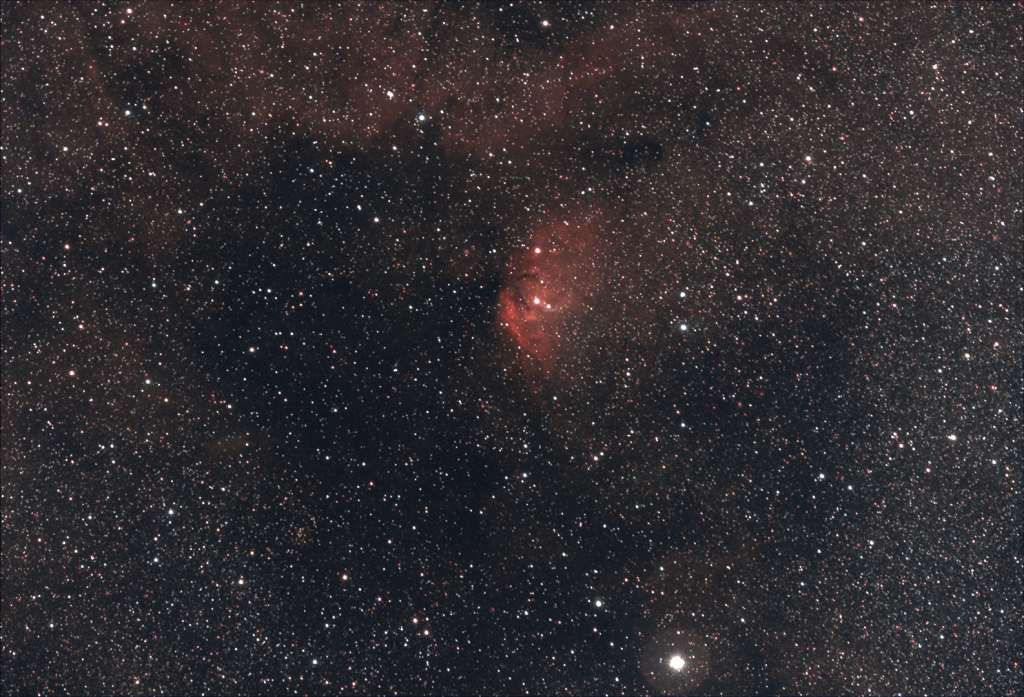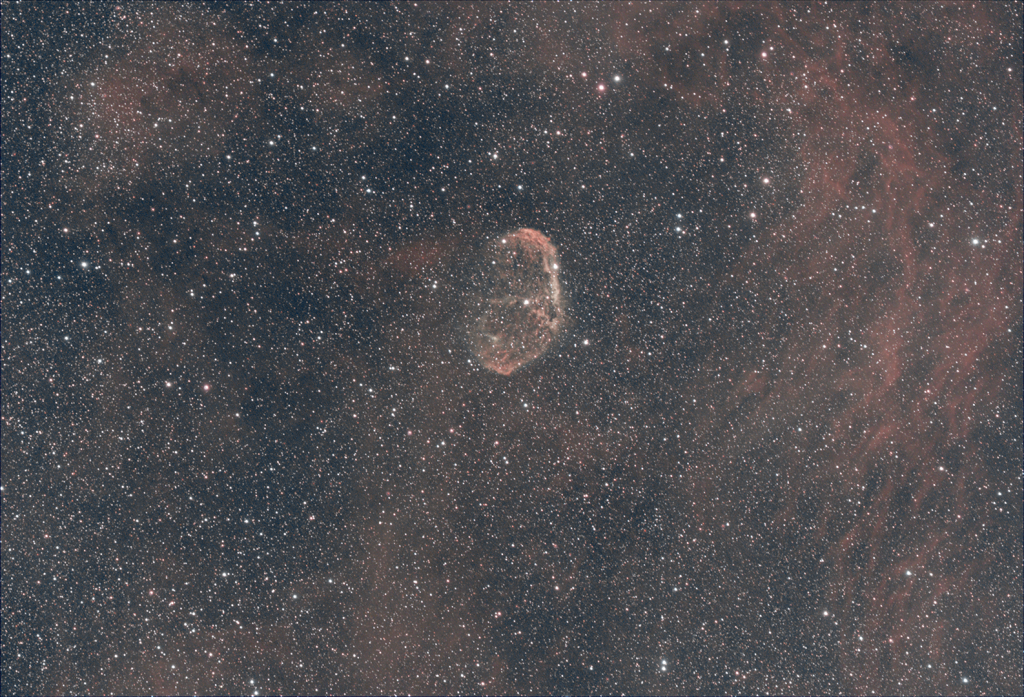Friday night I went up to the River Ridge Observatory to image some objects. I decided to start with the Iris Nebula (NGC 7023) in Cepheus which I have attempted twice before. This time I was able to take longer subs that were later combined. Each was 5 minutes long and I also lowered my gain from 300 to 200 because this object has a lot of dynamic range and I didn’t want to lose that. This was taken with my C11 and Hyperstar shooting at f/1.9 with a light pollution filter. In all 20 5 minute images were combined and all processing was done in Photoshop. I think I’ve finally gotten the three dimensional image I’ve been looking for, the nebula seems to float above the stars.



